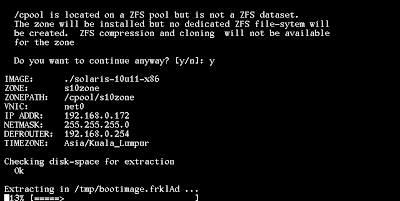In this post, we are going to test our backup data in an isolated environment while production VMs are up and running. The best part is without restore backup data and without prepare a staging environment.
How are we going to do it? Quite simple with Veeam Data Labs. With Data Labs we can mount backup data from Veeam repository to an isolated environment. VM able to power up from backup storage & perform backup verification.
Let explore on how to do it with our environment.
[Our environment]
- Subnet: 192.168.0.0/24
- Gateway : 192.168.0.254
- Backup Virtual Machine using Veeam Backup & Replication & store into Veeam Repository
- [optional] - Supported storage integration & use Storage snapshot
- Vmware ESX Host
[ Virtual Lab ]
The first step is create a virtual lab. Virtual Lab is an isolated virtual environment in which Veeam Backup & replication verifies VMs.
Isolated environment:
- Masquerade Subnet: 192.168.255.0/24 [non routable IP address]
- Proxy Appliance IP: 192.168.0.111 [Same range as production network]
- Proxy Appliance IP in the isolated network: 192.168.0.254 [match the production gateway ip]
- Networking : Advanced single host[manual configuration]
- Static IP Mapping: Only Veeam Backup Server has access to isolated environment. If you want to access from production network, you can define static IP address mapping [routable ip on production network]
- 192.168.0.49 [Isolated IP] -> 192.168.0.149 [DC Production IP]
[Application Group ]
Define priority of VM start in an isolated environment by using Application Group.
Select where the source that you want to take for backup verification. You can select from backup, replica or from storage snapshot. We will select "From backup"
Our workload: Active Directory & Exchange VM
Set priority VM to boot. AD need to boot first before exchange server. Put AD to top of the list.
Edit the VM, define the test to perform.
Example:
AD - Test DNS, Global Catalog
Exchange - Test Mail
[SureBackup]
Once you've created virtual lab & application group, you can start to create a SureBackup Job to verify backup data in an isolated environment.
Select Virtual Lab that you've configured in previous step
Select Application Group that you've configured in previous step
[Final result]


















































